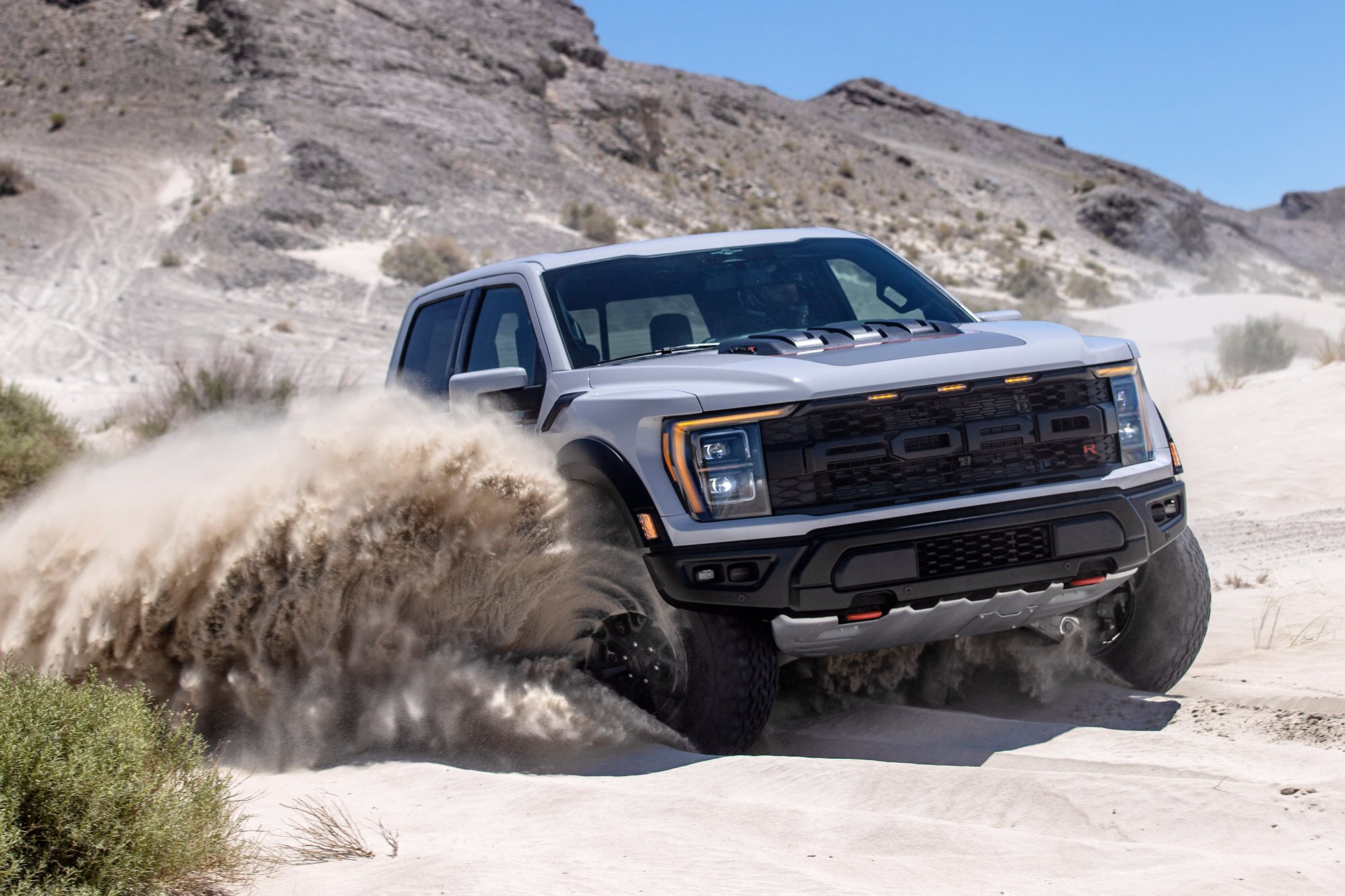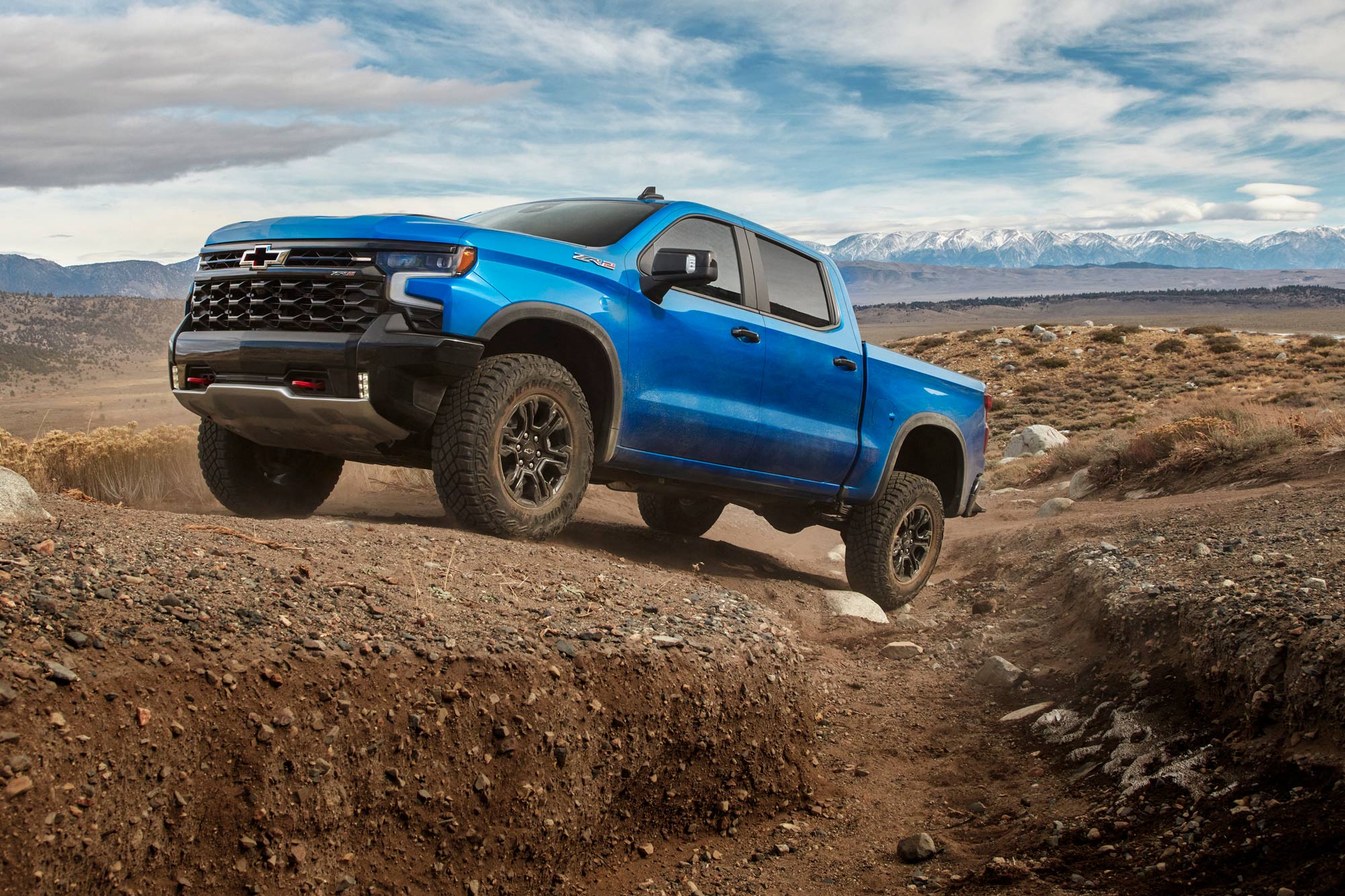The Drawbacks of Opting for an Off-Road Package
Off-road trucks and SUVs are great fun, but you'll pay the price on the pavement.
 Ford
Ford
But when you tick that option box, you may get less vehicle than you bargained for. The dingy side to that shiny coin is reduced fuel economy, passenger comfort, and utility on the street.
 Ford
Ford
Acoustics and Mileage Suffer Where the Rubber Meets the Road
When you select a vehicle for its off-road prowess, you'll get a few basic upgrades, such as more aggressive tires with meatier tread and stiffer sidewalls to withstand punctures. The Ford Bronco Raptor comes standard with massive 35-inch all-terrain tires. While these are great for crawling over obstacles, they are loud on the pavement. Be prepared to speak a little louder to your passengers or turn up the radio volume.
Further, while a standard Bronco can achieve an EPA fuel-economy rating of 20/21/20 mpg city/highway/combined, the "Braptor's" large tires contribute to its reduced rating of 15/16/15 mpg.
 Chevrolet
Chevrolet
A Lifted Ride and Softer Shocks Compromise Ride and Handling
Off-road trucks and SUVs come with upgraded shocks tuned specifically for performance on the dirt — softer than those on a standard pickup — to soak up the bumps. Often these suspension components also provide more ground clearance while the shocks offer more travel.
Here's where most folks feel the hit to everyday drivability. Off-road trucks exhibit more body roll in corners, thanks to the softer and longer shocks, requiring the driver to slow down when the road turns twisty.
Taller shocks can also make loading and unloading cumbersome. If a truck has a 2-inch lift, the tailgate will be 2 inches higher. Add in a taller tire and you might find that lifting your gear into the bed has become a full-on workout. Most off-road trucks don't have side steps either, so be prepared to use the grab handle to haul yourself up behind the wheel.
 Ford
Ford
Off-Road Components Reduce Capacity
Towing capacity is also decreased with off-road suspension. For example, the top off-road trim of the Chevrolet Colorado ZR2 Bison is only rated to tow 5,500 pounds, while the standard ZR2 can tow 6,000 pounds. Meanwhile, the base Colorado WT can tow 7,700 pounds.
The discrepancy comes in part from the softer springs in the off-road models. Adding a trailer causes the rear to sag, putting stress on components and lifting the front enough to negatively affect steering. Trucks with a suspension lift also have a higher center of gravity, which decreases stability — not what you want when pulling cargo.
Off-road trucks are also heavier, which reduces hauling capacity. Every vehicle has a gross vehicle weight rating (GVWR), which is the maximum amount a loaded vehicle can weigh. A Ford Ranger Raptor weighs 5,325 pounds with its steel bash plates and larger tires and has a payload capacity of 1,375 pounds. A standard 4x4 Ranger weighs 910 pounds less — 4,415 pounds — but can haul more: 1,711 pounds.
Written by humans.
Edited by humans.
 Emme Hall
Emme HallEmme Hall loves small convertibles and gets out to the canyons in her 2004 Mazdaspeed Miata whenever she can. You can also find her in the dirt in her lifted (yes, that's right) 2001 Mazda Miata, or racing air-cooled Volkswagens in races like the Baja 1000. She's taken first place twice in the Rebelle Rally — once driving a Jeep Wrangler and then a Rolls-Royce Cullinan the second time. She was also the first driver to take an electric vehicle to the Rebelle Rally when campaigning the Rivian R1T to a top-five finish.
Related articles
View more related articles